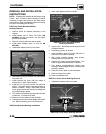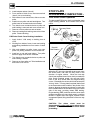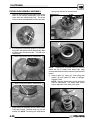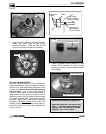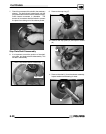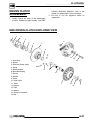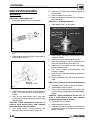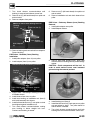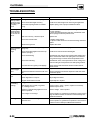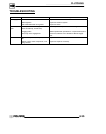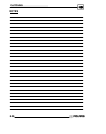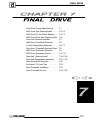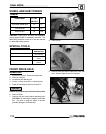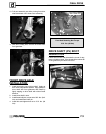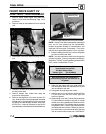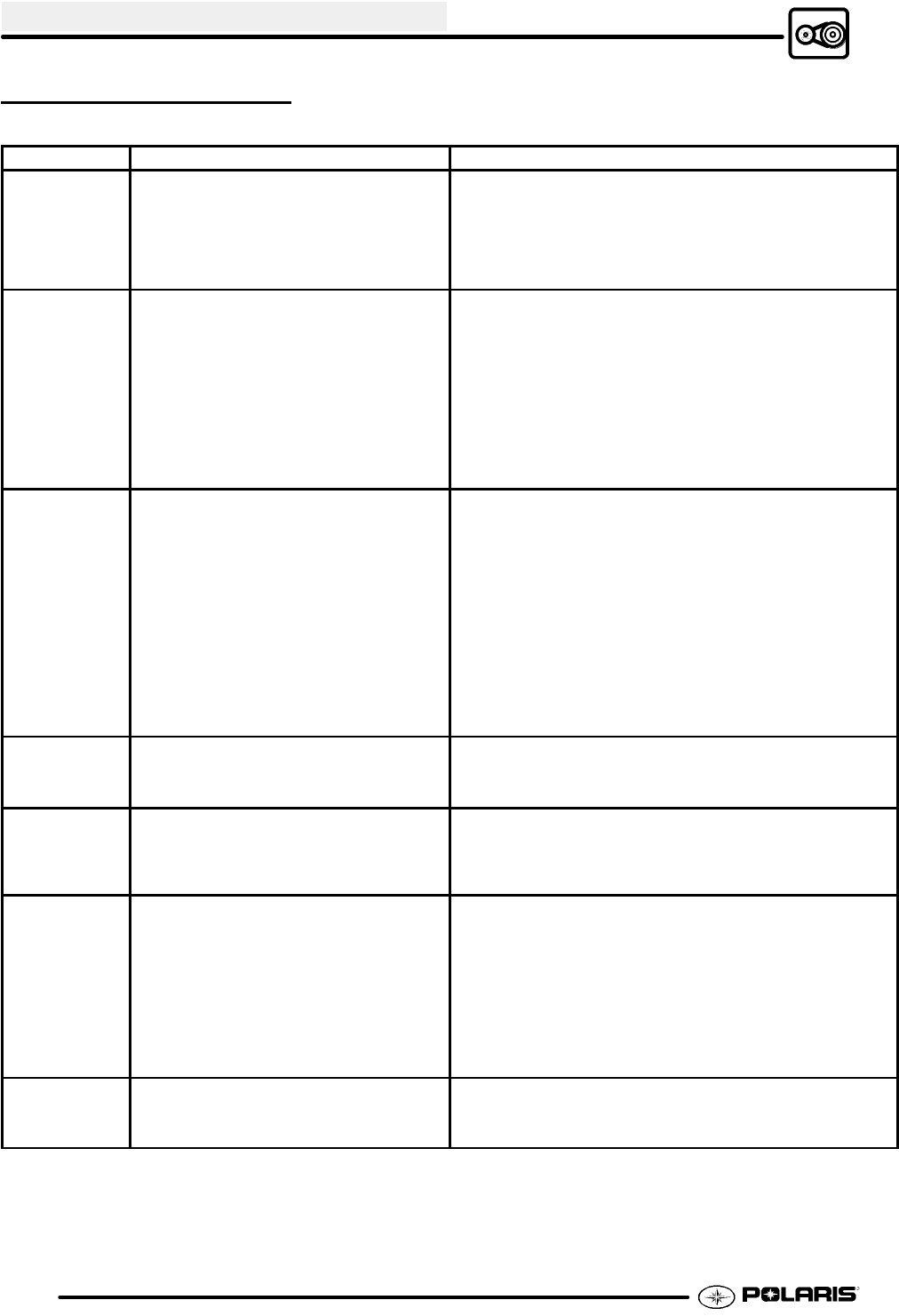
CLUTCHING
6.34
TROUBLESHOOTING
Situation Probable Cause Remedy
Engine RPM
below specified
operating range
although engine
is properly
tuned.
-Wrong or broken drive clutch spring.
-Drive clutch shift weight too heavy.
-Drivenclutchspringbrokenorinstalled
wrong .
-Replace with recommended spring.
-Install correct shift weight kit to match engine application.
-Replace spring; refer to proper installation location.
Erratic engine
operating RPM
during accelera-
tion or load vari-
ations.
-Drive clutch binding.
-Belt worn unevenly - thin/burnt spots
-Driven clutch malfunction.
-Sheave face grooved.
a. Disassemble drive clutch; inspect shift weights for wear
and free operation.
b. Clean and polish stationary shaft hub; reassemble clutch
without spring to determine problem area.
Replace belt
a. Replace ramp buttons.
b. Inspect movable sheave for excessive bushing clearance/
replace.
-Replace the clutch.
Engine RPM
above specified
operating
range.
-Incorrectdriveclutchspring(toohigh
spring rate).
-Drive clutch shift weights incorrect for ap-
plication (too light).
-Drive clutch binding.
-Driven clutch binding.
-Converter sheaves greasy; belt slippage.
-Install correct recommended spring.
-Install correct recommended shift weights.
-Disassemble and clean clutch, inspecting shift weights and
rollers. Reassemble without the spring and move sheaves
through entire range to further determine probable cause.
-Disassemble, clean, and inspect driven clutch, noting worn
sheave bushing and ramp buttons and helix spring location.
-Clean sheaves with denatured alcohol or brake cleaner,
install new belt.
Harsh drive
clutch engage-
ment.
-Drive belt worn too narrow.
-Excessive belt/sheave clearance with new
belt.
-Replace belt.
-Perform belt/sheave clearance adjustment with shim wash-
ers beneath spider.
Drive belt turns
over
-Wrong belt for application.
-Clutch alignment out of spec.
-Engine mount broken or loose.
-Replace with correct belt.
-Adjust alignment offset.
-Inspect/adjust or replace.
PVT cover
overheating
(melting)
-Plugged air intake or outlet
-Belt slippage due to water, oil, grease,
etc., rubbing on cover
-Clutches or weight being applied to cover
while in operation
-Use of High vs. low range
-Clear obstruction.
-Inspect system. Clean , repair or replace as necessary.
Seal PVT system ducts.
-Remove weight. Inform operator.
-Instruct operator on guidelines for operation in proper driving
range for different terrain as outlined in Owner’s Safety and
Maintenance Manual.
Water ingestion -Cover seals or ducts leaking
-Operator error
-Find leak and repair as necessary.
-Instruct operator on guidelines for operation in wet terrain as
outlined in Owner’s Safety and Maintenance Manual.



